
The COVID-19 Cohort
A Unique Group of Immigrants
May 20, 2021
Who is the COVID-19 immigrant cohort?

COVID-19’s impact on immigration has been extraordinary.
Immigrants who arrived or settled in Canada during the pandemic are distinct from previous groups of permanent residents.
Understanding what makes this cohort unique is key to helping us identify their unique assets and tackle the integration challenges they may face. It also helps leaders across the immigration sector plan for the future and offset the negative impacts of the pandemic.
Want to learn more about the immigration trends during the pandemic?
In March 2020, the federal government introduced travel restrictions to help contain the spread of COVID-19. How has immigration been affected?
Introducing the COVID-19 cohort
Fewer arrivals
Permanent resident admissions fell by more than 50%.

Travel restrictions led to an unprecedented decline in immigration levels in 2020. Overall, permanent resident admissions fell by 56 % between March and December.
Permanent resident admissions, all categories
(percentage change, 2019–2020)
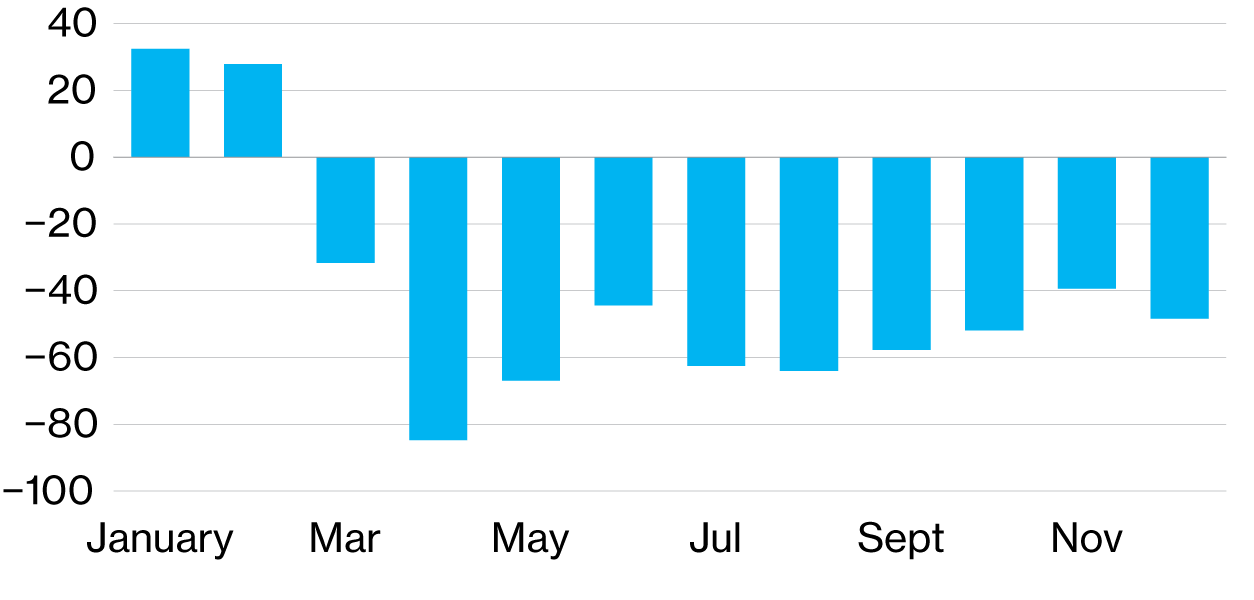
Sources: The Conference Board of Canada; Immigration, Refugees and Citizenship Canada Open Data Portal.
Admission profiles
The composition of permanent residents welcomed has changed.

Economic admissions peaked early in the pandemic, but refugee and family class admissions began to recover
by the end of 2020.
Admission categories as a share of total permanent resident admissions
(percentage change, 2019–2020)
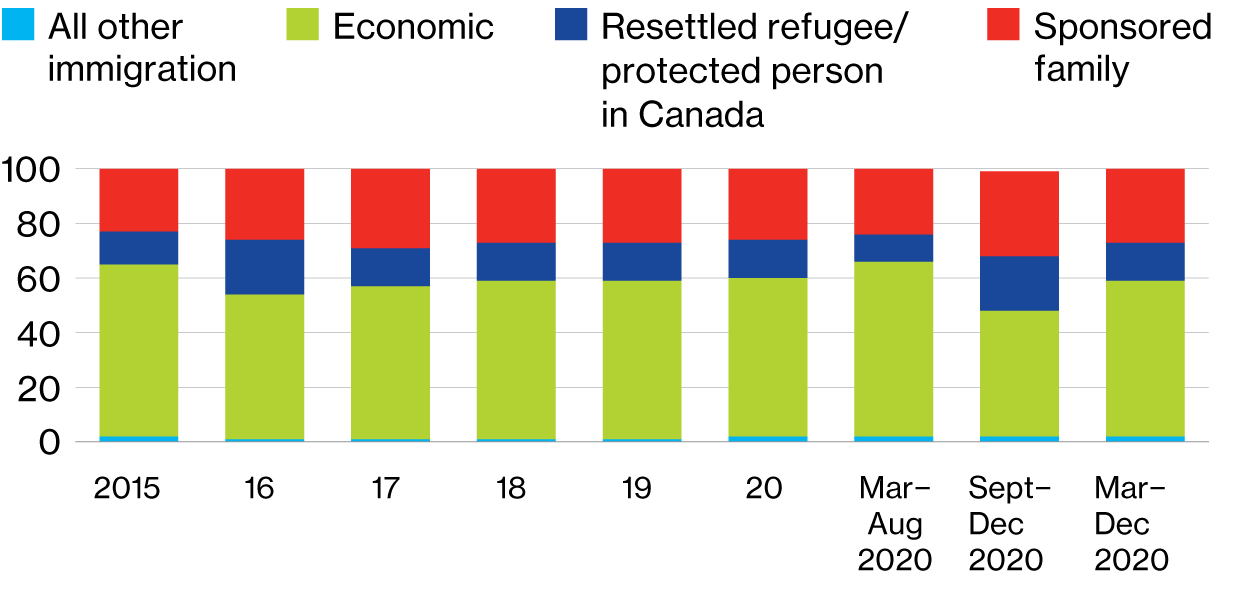
Sources: The Conference Board of Canada; Immigration, Refugees and Citizenship Canada Open Data Portal.
Canadian experience
Newcomers are more likely to have already worked or studied in Canada.

The share of new permanent residents who have already worked or studied in Canada grew almost 10 percentage points in 2020. The Canadian Experience Class made up a greater share of all economic admissions in 2020 than in previous years.
Economic immigration categories as a share of total economic admissions
(per cent)
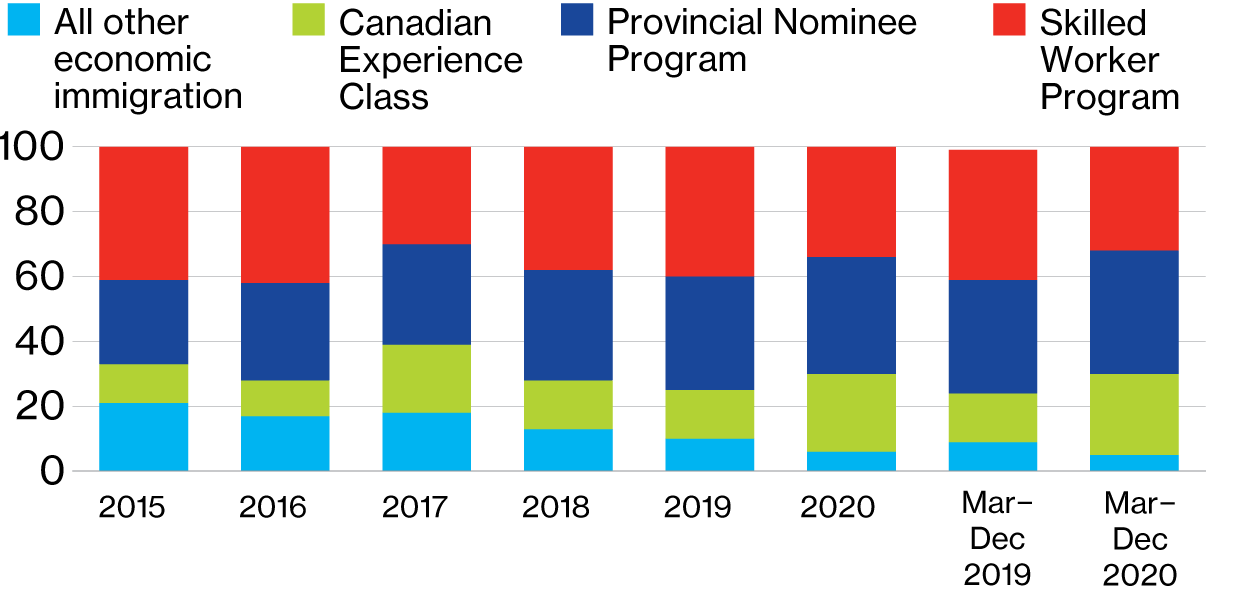
Sources: The Conference Board of Canada; Immigration, Refugees and Citizenship Canada Open Data Portal.
Uneven landings
COVID-19 has affected some regions more than others.
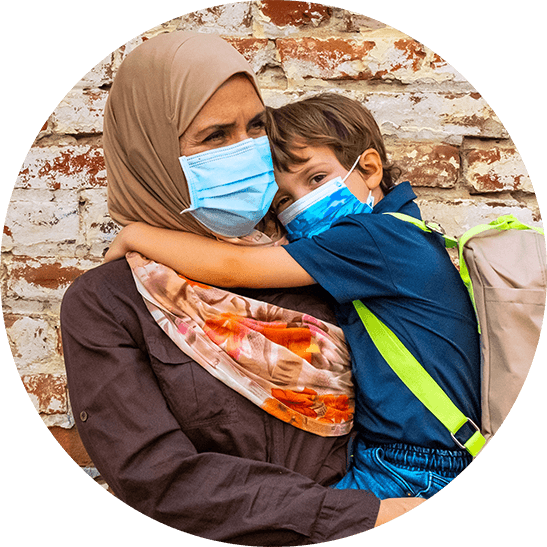
COVID-19’s impact on admissions has been geographically uneven. Provinces that typically settle the most immigrants faired better than other locations. But decisions such as prioritizing CEC applications during the pandemic put regions such as Atlantic Canada at a disadvantage.
Permanent resident admissions, all categories
(percentage change, 2019 average to March–December 2020)
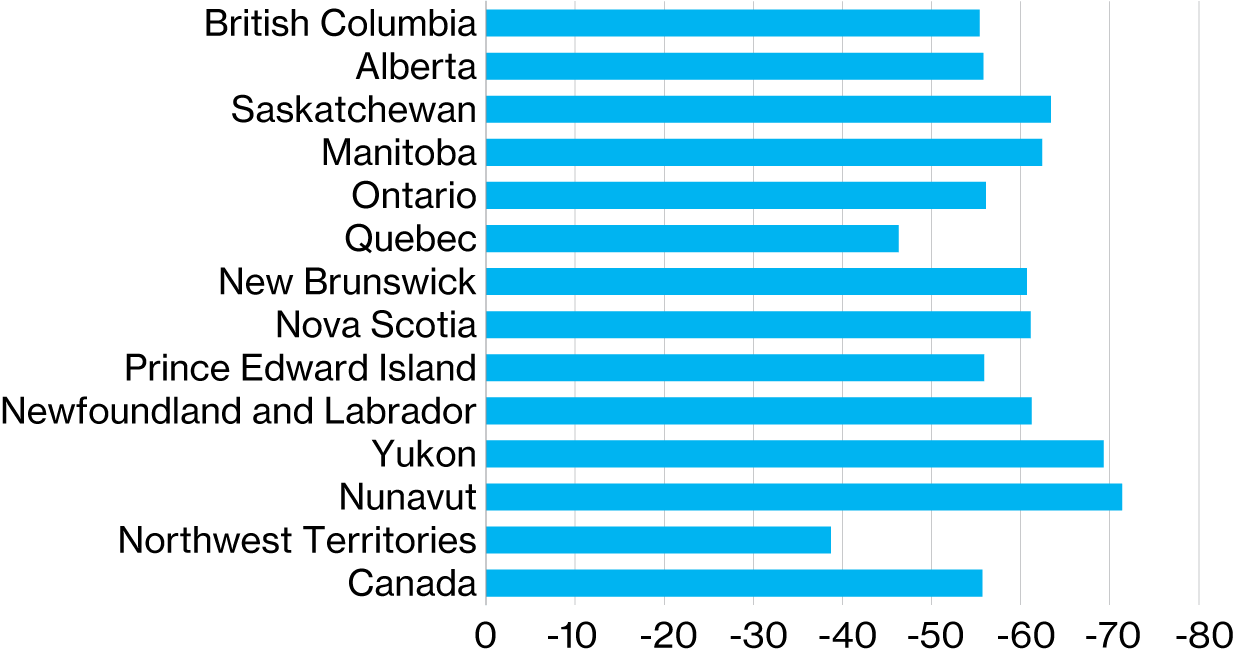
Sources: The Conference Board of Canada; Immigration, Refugees and Citizenship Canada Open Data Portal.
What economic circumstances are newcomers facing?
High unemployment levels
- Employment levels are still lower than before the pandemic.
- Because many industries won’t fully recover until vaccines are readily available and borders reopen, we don’t expect employment levels to fully rebound until the end of the year.
- We anticipate job growth will pick up later this year, once a vaccine is widely available, and growth will continue in 2022.
Hard-hit sectors
- Immigrants are over-represented in particularly hard-hit sectors, including accommodation and food services, and so have been especially affected by the pandemic.
Heightened insecurity
- A higher number of recent immigrant workers lost their jobs after the pandemic hit than Canadian-born workers. Job loss was particularly high among recent immigrant women.
- Recent immigrants are more likely to work in jobs that pay less, despite being more educated than Canadians on average.
- Workers who haven’t been at their job for very long, like newcomers, tend to be laid off first in an economic downturn.
Potential long-lasting effects
- Even though the economy is recovering, fewer recent immigrants have gone back to work compared with Canadian-born workers. Again, recent immigrant women have fared the worst. Studies show that the longer workers are unemployed, the less likely they are to find jobs in the future.
- Poor economic conditions at arrival also hurt long-term economic outcomes for immigrants—what some researchers call the “scarring effect.”
Learn more about immigration during the pandemic.
Where do we go from here?

In October 2020, the federal government announced a new plan to bring more immigrants to Canada over the next three years. The intention is to offset low immigration levels and fuel Canada’s pandemic recovery and long-term growth.
The government has also announced a new pathway in April 2021 to transition 90,000 international graduates and temporary workers in essential occupations to permanent residency.
How can we maximize the benefits of immigration while ensuring they don’t come at the expense of newcomers?
The COVID-19 cohort at mid- and post-recovery
Coming soon. We are launching a longitudinal study that follows the COVID-19 cohort to see how they fare after the pandemic.
- How well are efforts to help this cohort working?
- What more can we do?
- How did the COVID-19 cohort compare with previous immigrant cohorts? What have we learned about immigrant integration?
- Was the decision to keep immigration levels high post-pandemic a success?
Do you work in the immigrant-serving sector? Are you a newcomer who arrived or settled in Canada during the pandemic? We want to hear from you. Contact us to learn more about the research and get involved.
Learn more about the economic impacts of immigration during the pandemic.







